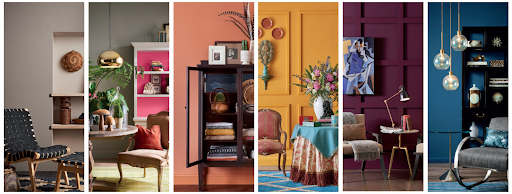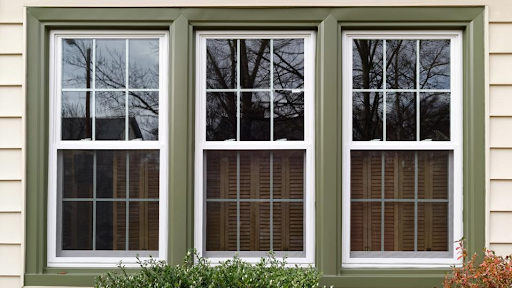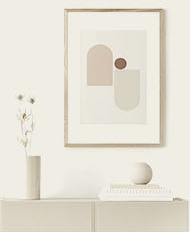
A Guide to Designing with Bold Colors: Going Beyond Neutrals
Colour is one of the most powerful tools in interior spaces. It can evoke emotions and set the tone for any room. Yet, when it comes to embracing colors, people hesitate to use bold or vibrant colors, fearing they might overwhelm the space or go out of style. This reluctance often results in neutral, unimpressive designs that lack personality and fail to make a lasting impact.
What is the Impact of Colour in Interior Design?
Source: SBID
Different colors evoke different feelings. Warm tones like red, orange, and yellow tend to be energizing and uplifting, making them perfect for social spaces like living rooms and dining areas. On the other hand, cool colors like blue, green, and lavender promote calm and relaxation, making them ideal for bedrooms or bathrooms. Neutral tones, such as beige, gray, and white, offer balance and can create a sense of serenity or elegance.
Color can also affect how large or small a room feels. Light colors, especially whites and pastels, make spaces feel bigger and airier, while darker colors can create a more intimate, cozy atmosphere. If you have a small room that you want to feel more spacious, opting for lighter hues can make a significant difference.
How to Best Incorporate Colors in Your Interior Design?
Source: Love That Design
Colour is more than just a visual experience; it’s a psychological one. The colors you choose for your home can influence the atmosphere and functionality of a space. Here are some ways in which color impacts interior design:
-
Start with a Colour Palette
Before you begin decorating, establish a cohesive color palette. Consider the mood you want to create and the function of each room. A palette typically includes a primary color (used for large areas like walls), secondary colors (for furnishings and accents), and an accent color (for smaller decorative elements). This will help ensure consistency and flow throughout your home.
-
Use the 60-30-10 Rule
A tried-and-true method in interior design is the 60-30-10 rule. It suggests using 60% of the room’s dominant color, 30% of a secondary color, and 10% of an accent color. This formula allows you to create balance while incorporating bold colors in smaller doses.
For example, in a living room, 60% of the space might feature a soft, neutral color for the walls, 30% might consist of a bolder shade used in furniture, and the remaining 10% could be an accent color showcased in decorative accessories like pillows or art pieces.
-
Incorporate Colour Through Textiles
If you’re hesitant about painting your walls, textiles like curtains, rugs, throw pillows, and bedding are a great way to introduce color. These elements can be easily swapped out as trends change or as your preferences evolve, allowing for flexibility and creativity without a long-term commitment.
Source: Decorilla
-
Accent Walls for a Pop of Colour
If you want to experiment with bold colors but don’t want to commit to an entire room, consider creating an accent wall. A single wall painted in a vibrant color can become the focal point of a room, adding depth and personality without overwhelming the space.
-
Play with Patterns
Patterns are another fantastic way to add color and interest to a room. Stripes, florals, geometric shapes, and abstract designs can introduce multiple colors at once, creating a dynamic and layered look. Just be sure to balance patterns with solid colors to avoid visual clutter.
-
Consider Natural Lighting
Lighting plays an important role in how colors appear. A room with lots of natural light may amplify bright colors, while dimly lit spaces can make darker hues feel even more intense. When selecting colors, consider the amount of natural and artificial light a room receives to ensure the colors you choose have the desired effect.
In Conclusion
Colour is a powerful element in interior design that should never be overlooked. Far from being risky, the strategic use of color can elevate a room’s mood, functionality, and aesthetic appeal. Whether you prefer bold, vibrant hues or soft, neutral tones, color allows you to express your personal style and create spaces that are uniquely yours.
Visit The Archizy Shop to explore vibrant and colorful home products.














